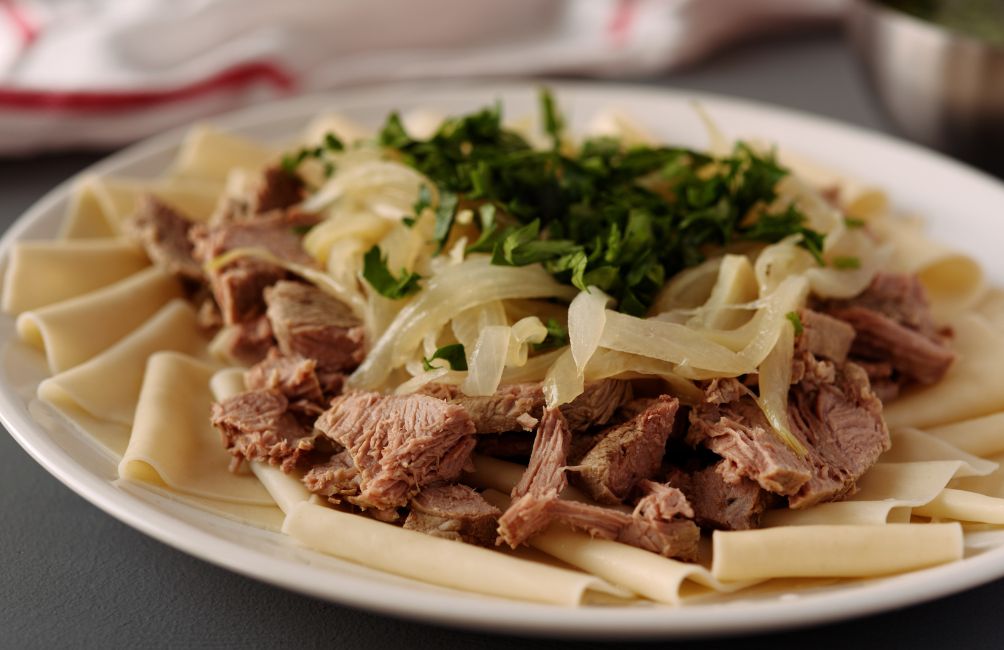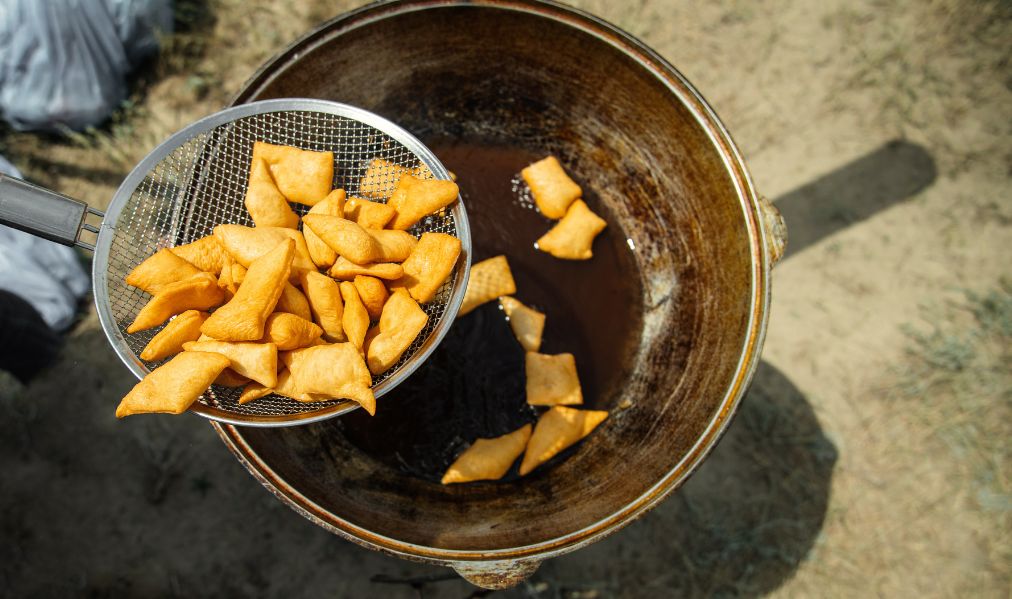%20(Medium)%20(Small).JPG)
.jpg)
Discovering a country means immersing yourself in the culture of its people and learning about its history. Food is a great way to do this!
Kazakhstan is rich in ancestral culinary traditions that reflect its nomadic past.
In this article, discover Kazakh customs, dishes you won't want to miss on your next trip, and a few tips.
Kazakh cuisine is closely linked to its nomadic heritage. For centuries, the Kazakhs roamed the steppes on horseback, living in harmony with the seasons and animals. Their diet reflected this itinerant lifestyle, relying almost exclusively on meat (particularly horse and sheep) and dairy products, designed to withstand the extreme cold and sustain long journeys.
However, over time, Kazakh cuisine has been enriched by contact with other Central Asian cultures. These influences have introduced a greater variety of ingredients and recipes, giving rise to a culinary tradition that combines nomadic simplicity with regional diversity.
🐎 The horse is the symbol of Kazakhstan. In addition to being a means of transportation still in use today, it is also considered sacred food. Horse meat, rich in protein, is a delicacy served at celebrations, weddings, and traditional ceremonies.
In Kazakhstan, food is much more than a necessity: it is a sacred act of hospitality. You will often be invited to drink tea or try a dish, even by strangers. Never refuse a baursak or a bowl of kumys: it is an honor, an ancestral gesture of sharing.
🎁 When traveling to Kazakhstan, consider bringing some specialties from your home country to offer to your local hosts or guides. This is the best way to show them how grateful you are.
A national dish of Kazakhstan and served on all occasions, beshbarmak (which literally means “five fingers,” as it is traditionally eaten with the hands) is a symbol of hospitality.
It consists of strips of homemade dough served with boiled horse or mutton meat, topped with a fragrant broth and sliced onions.

Kumys is a fermented drink made from mare's milk. Light, slightly alcoholic, and sparkling, it is renowned for its medicinal properties.
You may be served it before your meal in a restaurant, so take the opportunity to try it!
Kumys was once reserved for tribal chiefs and shamans for its revitalizing properties.
Golden, soft, and slightly sweet, baursaks are small fried doughnuts served hot with tea, honey, or jam. You can find them at any time of day: from breakfast to dinner, they are even served during festivities.

Shubat, a cousin of kumys, is another iconic drink, this time made from camel milk. Highly nutritious, it is also used for its medicinal properties. It has a very distinctive tangy flavor that is definitely worth discovering during your trips to visit nomadic communities in the mountains.
Laghman is a must-try Uyghur dish that is very popular in Kazakhstan. It consists of thick handmade noodles served with a rich stew of vegetables such as peppers, tomatoes, and onions, as well as meat, often lamb or beef. Tasty and comforting, this dish perfectly embodies the fusion between nomadic traditions and sedentary cuisines.
.jpg)
🥦 Meat plays a central role in Kazakh cuisine. While vegetarian options are becoming increasingly available in Almaty and Astana, they remain rare in villages and small towns. To avoid any difficulties, inform your travel organizers of your dietary requirements in advance: they will take care to provide a vegetarian alternative. Similarly, Kazakhs are very welcoming and know how to improvise suitable dishes, whether in private homes or restaurants.
Manti are large steamed dumplings of Turkish origin. They are usually stuffed with minced meat, most often lamb or beef, mixed with onions. They are often served with sour cream or mildly spicy sauces. The ultimate dish for sharing, manti are prepared in large quantities for family meals or celebrations, and symbolize warmth and hospitality.
.jpg)
Plov is a rice dish originating in Uzbekistan, a staple throughout Central Asia and very popular in Kazakhstan. It is cooked with pieces of meat—often lamb—carrots cut into thin sticks, onions, and sometimes raisins or chickpeas. Slow cooking in a cauldron allows the flavors to blend harmoniously and infuse each grain of rice. Considered a festive and convivial dish, plov is often prepared for special occasions and remains a symbol of culinary generosity in the region.
.jpg)
🗺️ Find all the best places to try these traditional dishes and lots of tips in my Kazakhstan travel guide (e-book), with 62 pages of content to help you plan your trip.
Travelling to Kazakhstan as a single woman
Do you need a visa to go to Kazakhstan?
